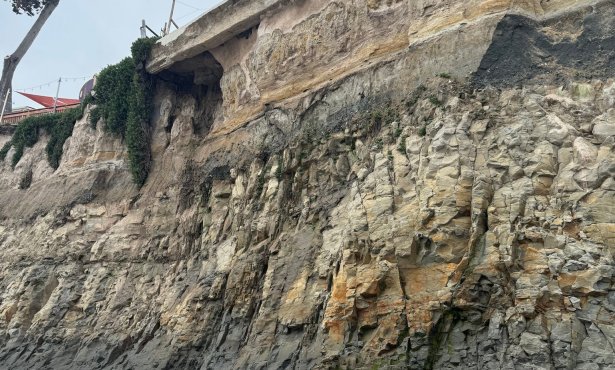Q: ‘Wasn’t pampas grass once an important crop around here?’
Question:‘Wasn’t pampas grass once an important crop around
here?’ —Derek Rosen
For some 20 years at the end of the 19th century, the South
Coast was indeed home to a major pampas grass industry. The plumes
were used to decorate Victorian-era homes, the hats of
Victorian-era ladies, and were put to a variety of public uses such
as decoration of vehicles in parades. The South Coast rode the
crest of the pampas grass fad until the bottom fell out of the
market in the mid 1890s.
South American pampas grass was introduced to the U.S. in 1848;
when it made its appearance here remains unclear. One account
places the arrival of the plumes in the late 1860s, courtesy of one
Mrs. N. W. Winton. Joseph Sexton of Goleta wrote in an 1882 article
that pampas was growing at the homes of two Santa Barbara citizens
in 1867. Whatever the case, it was not until Sexton began
commercially planting large numbers of pampas in 1874 that the
industry on the South Coast really took off.
Two years earlier, Sexton laid out his first plantings — a few
hundred plants that he sold to be used as landscaping. In 1874, he
discovered that by removing immature plumes from their husks and
exposing them to the sun, male plumes “would hang heavily like
oats, while the female would fluff up and become light and airy.”
He sold some of the plumes locally and up in San Francisco, but his
first major sale was to a firm in New York, which ordered 300
plumes as Christmas decorations and almost immediately doubled its
order due to overwhelming demand.
Within a few years farmers from Goleta to Carpinteria were
cashing in on the pampas fad, although the Goleta Valley remained
the primary production area. The plumes were harvested in the
autumn. Picking the plumes was a tricky matter for timing depended
on the age of the plant and the nature of that year’s growing
season. Once cut, the stalks were taken to the husking bench where
the plumes were removed from their sheaths. They were then laid
upon the ground for three days to bleach in the sun. The plumes had
to be turned once a day and a member of the Sexton family recalled
how the laborers would move down rows 300 yards long, turning the
plumes without once standing upright. The plumes were then moved to
well-ventilated sheds to finish drying, which took about 10 to 14
days.
The plumes were then packed in bags of canvas or burlap,
containing some 2,000 plumes apiece, or packed in wooden boxes that
could hold as many as 3,000 plumes each. Then they were shipped off
to market, primarily the East Coast, and to Europe, especially
England and Germany.
For a few years the demand for the plumes seemed almost
insatiable. Sexton alone shipped some 250,000 plumes from 1874 to
1881, and the following year shipped an additional 50,000. In 1883,
Joseph Spence of Goleta harvested some 100,000 plumes. The average
wholesale price in 1883 was around 4 cents per plume. Another major
producer was George Williams who had plots of the grass dotted
around Santa Barbara, near Veronica Springs, in the upper Westside
and lower Eastside, and near where Five Points Shopping Center is
today.
By the mid 1890s, overproduction and decreased demand spelled
the end of the pampas boom market. Fields went untended and became
homes for rodents and other pests. The fields were difficult to
eradicate; pampas roots are thick and the leaves are razor sharp.
Pampas is also highly flammable, which presented another
danger.
There was a brief attempt to revive the pampas market in the
1940s, without much success. Today pampas is still used on a small
scale as an ornamental, but it has been classified as an invasive
plant, a possible threat to native plant species. There will be no
return to the days of the late 19th century when it seemed that
just about everyone was mad for the plumes of the pampas.



